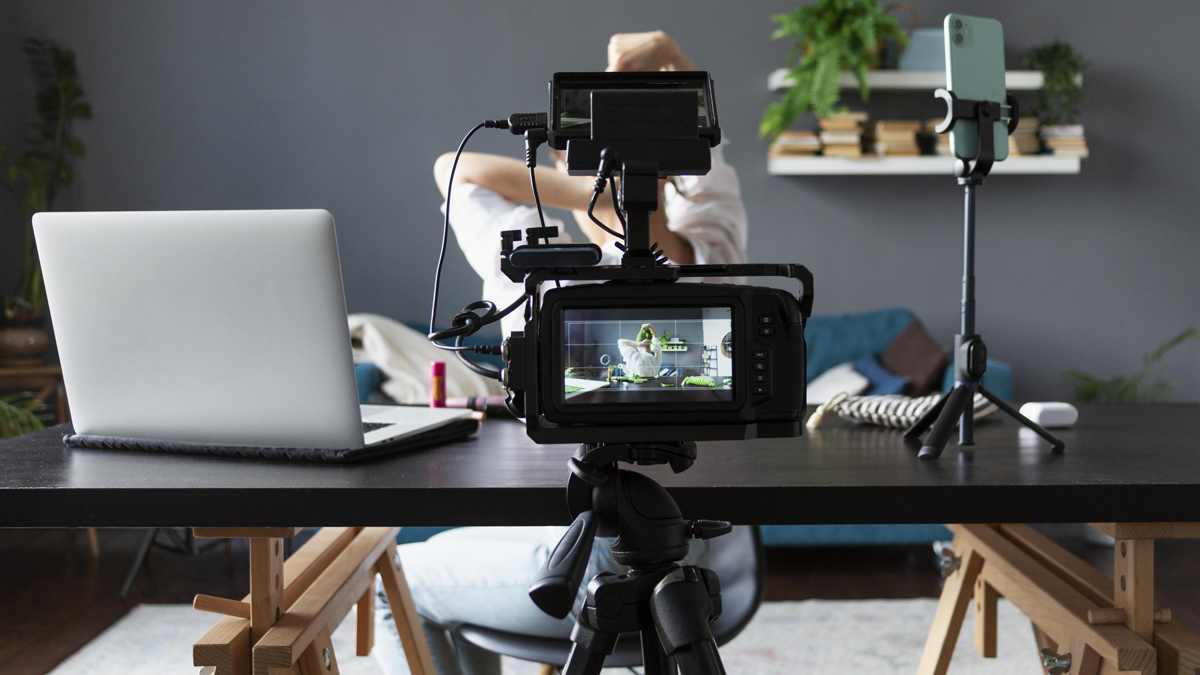Virtual production is transforming the cinema industry by blending physical sets with live digital environments. This approach uses powerful tools and specialized software to give filmmakers greater creative freedom and technical control. From real-time rendering engines that generate photorealistic backgrounds on the fly to LED volume calibration systems that ensure perfect on-set visuals, each element plays a vital role. Either it is capturing an actor’s performance or compositing layers live, these technologies work together to streamline the production process. This article covers the essential tools and software that are driving virtual production today and how they benefit modern filmmaking.
| Table of Contents | |
|---|---|
| I. | Real-Time Rendering Engines |
| II. | LED Volume Calibration & Media Servers |
| III. | In-Camera VFX & Camera Tracking |
| IV. | Motion Capture & Performance Capture |
| V. | Virtual Art Department & Previsualization |
| VI. | Live Compositing & Keying |
| VII. | Asset Management & Production Tracking |
| VIII. | Cloud-Based Collaboration & Remote Workflows |
| IX. | Virtual Camera Systems & Remote Cinematography |
| X. | Color Pipeline & LUT Management |
| XI. | AI-Powered Enhancements & Automation |
Real-Time Rendering Engines
Real-time rendering engines like Unreal Engine and Unity power virtual production by generating high-quality, interactive visuals instantly. They allow directors and cinematographers to see digital environments in-camera, reducing guesswork and speeding iteration. Using GPU acceleration, these engines render complex scenes at high frame rates, ensuring smooth playback on LED stages. Advanced features like ray tracing and global illumination bring lifelike lighting and reflections. Real-time feedback helps teams adjust scene composition, camera movements, and visual effects during shooting, improving efficiency and creative control.
LED Volume Calibration & Media Servers
LED volume calibration tools and media servers ensure that on-set LED walls display accurate, synchronized content. Systems like disguise, Brompton, and Ventuz handle media playback, managing resolution, frame rates, and color space. Calibration software aligns projected images with physical stage geometry, correcting for lens distortion and seamless edge blending. Media servers store and deliver high-bandwidth video to LED panels, coordinating multiple zones for consistent visuals. This precise control is vital for immersive backgrounds, allowing filmmakers to adjust scenes in real time and maintain visual quality across large LED volumes.
In-Camera VFX & Camera Tracking
In-camera VFX tools combine live-action footage with digital backgrounds in real time, reducing post-production work. Camera tracking systems like Mo-Sys and Ncam use sensors and markers to record precise camera position and movement. This data feeds into rendering engines to maintain alignment between the camera and virtual environment. By capturing VFX in-camera, directors can frame shots with final backgrounds and effects in view. This technique speeds up production, lowers costs, and improves creative decisions by allowing teams to see composed effects on set.
Motion Capture & Performance Capture
Motion capture and performance capture systems track actors’ movements and facial expressions to bring realistic performances into digital scenes. Tools like Vicon, OptiTrack, and Faceware use markers or markerless tech to record data in real time. This data drives digital character rigs in engines or animation software. High-fidelity capture allows subtle performances such as eye twitches and lip sync to be preserved. Integrating performance capture with real-time engines gives directors instant feedback on how virtual characters move, improving accuracy and speeding up the animation process.
Virtual Art Department & Previsualization
Virtual art department (VAD) software and previsualization tools let creative teams design and test scenes before build. Software like ShotGrid, Blender, and Maya enable quick layout of virtual sets, camera paths, and storyboards. Directors and designers can experiment with scale, lighting, and props in a digital space. Previs renders rough animations to communicate vision, reducing costly physical set changes later. By visualizing scenes early, teams align on creative direction, streamline approvals, and minimize rework, making production planning more efficient and collaborative.
Live Compositing & Keying
Live compositing and keying tools like Blackmagic Design’s ATEM and Adobe’s Character Animator merge multiple video sources in real time. These systems allow operators to key green or blue screens instantly, combining actors with digital backgrounds on-set. By adjusting parameters such as edge softness and spill suppression on the fly, teams achieve clean composites without waiting for post-production. Live compositing ensures that visual effects are in place during filming, enabling directors to frame shots accurately and spot potential issues immediately, saving time and reducing reshoots.
Asset Management & Production Tracking
Asset management and production tracking software like ftrack, ShotGrid, and Aspera keep digital assets organized and workflows transparent. These tools track versions of 3D models, textures, and scene files, logging who made changes and when. Production tracking dashboards display milestones, review notes, and task assignments to keep teams on schedule. Automated notifications alert artists to new versions or feedback, reducing manual coordination. By centralizing assets and production data, teams improve consistency, reduce duplication, and ensure that everyone works with the correct, approved files.
Cloud-Based Collaboration & Remote Workflows
Cloud-based collaboration platforms such as Frame.io, ShotLink, and Google Cloud enable remote teams to review footage and share feedback instantly. These services support uploading, streaming, and annotating high-resolution video without physical media transfers. Version control ensures everyone sees the latest takes, while access controls protect sensitive content. Integrated chat and approval tools keep communication central. As remote work becomes more common, cloud workflows allow global teams to coordinate virtual production tasks seamlessly, cutting down on travel costs and speeding up review cycles through real-time collaboration.
Virtual Camera Systems & Remote Cinematography
Virtual camera systems like Stype RedSpy and Mo-Sys VP Pro allow cinematographers to control digital cameras and lenses within a virtual environment. These tools translate physical camera movements to virtual rigs, enabling complex shots without bulky equipment. Remote cinematography setups let operators manage camera angles and focus from a control room or even another location. Combined with robotic arms and gimbals, virtual camera systems expand creative possibilities. Directors can plan dynamic camera moves in previsualization, then execute them accurately on set or remotely, saving time and resources.
Color Pipeline & LUT Management
Color pipeline tools and LUT management systems ensure consistent visual style from pre-production to final delivery. Software like DaVinci Resolve, Baselight, and ACES workflows manage color transforms, ensuring that colors look the same across cameras, monitors, and final output. LUTs (Look-Up Tables) can be loaded into on-set monitors and rendering engines to preview color grading in real time. Proper pipeline setup prevents mismatches in hue and contrast, saving time in post. Filmmakers maintain creative intent by viewing accurate color throughout the virtual production process.
AI-Powered Enhancements & Automation
AI-powered tools and automation streamline virtual production by accelerating tasks like background cleanup, rotoscoping, and asset tagging. Platforms such as Adobe Sensei, Runway ML, and Tachyon AI use machine learning to automate repetitive processes. AI-driven upscaling improves resolution of texture maps, while smart segmentation isolates subjects for quick compositing. Automated shot matching can balance lighting and color across takes. By integrating AI, teams reduce manual labor, minimize errors, and focus on creative decisions, making virtual production faster and more cost-effective.

